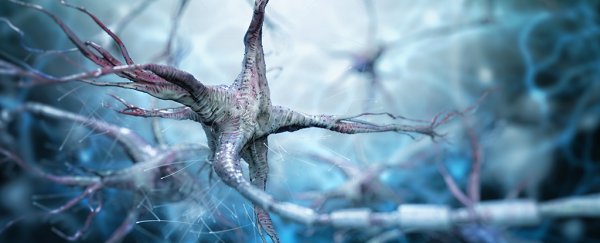Researchers have developed a new class of pain relief that acts on an obscure nerve pathway, opening the way to a medication just as concerns have deepened around the US opioid addiction and overdose epidemic.
While any marketable pharmaceutical based on the discovery would still need to go through the long process of clinical testing, the compound appears to work as well as other opioid-alternatives, requiring a smaller dose and remaining effective for a longer period.
The research led by scientists from The University of Texas has identified a group of molecules that bind with a pair of nerve receptors, one of which has been a mystery until recently.
The sigma-one receptor protein (σ1R) has been recognised as a potential target for a variety of therapeutic medications for well over a decade, with various drugs blocking or activating this important receptor on the membranes inside nerve cells.
But a sister receptor called sigma 2 receptor (σ2R) has remained rather enigmatic. Discovered a quarter of a century ago, it was only this year that researchers published details on the gene that coded for the protein, officially identifying the receptor as transmembrane protein 97 (Tmem97).
Both σ1R and σ2R/Tmem97 were considered promising candidates for pathways that could be exploited to treat pain that arises from damaged nerves, a condition referred to as neuropathy.
Around 20 million people in the US alone suffer from the symptoms of nerve pain, which in mild cases is managed by over-the-counter nonsteroidal anti-inflammatory drugs (NSAIDs) such as ibuprofen or aspirin.
For those suffering chronic pain, choices are a little more limited.
Opioids can do the trick, but come at a cost as doses need to increase with time in order to achieve the same level of relief. Many people are also allergic to this family of pain relief.
A non-opioid drug called gabapentin, sold under the brand name Neurontin, is often used to manage neuropathy. While its mechanisms aren't all that clear, it's thought to be involved in the regulation of the neurotransmitter gamma-Aminobutyric acid, or GABA.
Of the compounds being researched in this latest study, three that activated σ2R/Tmem97 appeared to reduce discomfort in mice that had spinal nerve pain.
"We started out just working on fundamental chemistry in the lab," says researcher James Sahn.
"But now we see the possibility that our discoveries could improve the quality of people's lives. That is very satisfying."
One of the compounds called UKH-1114 alleviated pain at one-sixth of the dose of gabapentin and peaked in its effectiveness at 48 hours, rather than lasting just 4 to 6 hours.
Clinical trials would still be needed to establish its effectiveness, dosages, and any potential side effects in humans, but early signs are promising.
"This opens the door to having a new treatment for neuropathic pain that is not an opioid," says Stephen Martin from The University of Texas.
"And that has huge implications."
The current crisis in the US over the prescription and use of both legal and illicit opioids has recently been declared a federal state of emergency, as lives are lost as a consequence of addiction. Recent CDC estimates put US deaths at over 90 every day.
The high levels of opioid prescription could be considered a contributing factor, though the solution is far more complex than simply depriving people from necessary medication.
Finding suitable replacements to opioids might not eliminate the problem, but would certainly provide a wider range of options.
Earlier this year a compound called RgIA was derived from the venom of cone-shell molluscs, offering yet another possibility in the arsenal of pain-fighting compounds.
With more work to unravel the workings of σ1R and σ2R/Tmem97 receptors, we could see a whole new family of pharmaceuticals bring relief for millions who live with crippling pain and the risk of addiction every year.
This research was published in PNAS.
